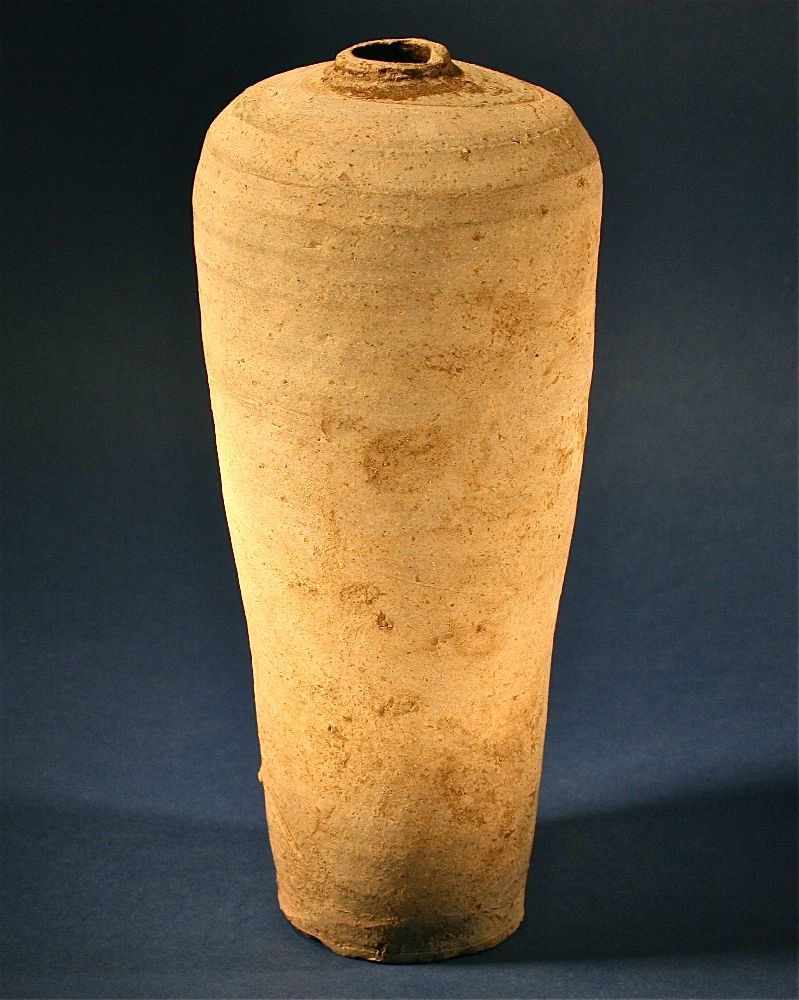

Title: Antique Chinese Ancient Clay Ceramic Afterlife Pottery Jar
Shipping: $69.00
Artist: N/A
Period: Antiquity
History: N/A
Origin: N/A
Condition: Excellent
Item Date: N/A
Item ID: 5804
Great looking old hand made vessel. This is a rare antique Chinese afterlife pottery jar. The hand-built vessel is of elongated Pottery form, the walls rising from a narrow foot, incurving to form the long sinuous neck zone, and flaring to the mouth. While the earthenware’s overall color is a warm yellowish-tan, dark scorch or ash markings occurred randomly during firing creating an attractive visual effect. This kind of pottery is best represented by these tall jars with gently curving sides, slightly flared lips, and narrow bases, the forms alone suggesting ceremonial use. Decoration consists of lightly applied cord-marking. Most likely this kind of pottery would have been buried with it's owner. This practice was more common among lower, working-class Chinese citizens who were buried with their personal possessions for use in the afterlife. The jar is in excellent condition. A rare and fine example of this type of pottery. ANTIQUE CHINESE * Condition: good. All of the art is edited and chosen by us for its high quality and workmanship before posting. We are committed to enhancing our customer’s lives by discovering creating, and pointing out only the best art we can find in the world today. We Are Taste-Makers, Art Advisers, Consultants & Publishers of the Greatest Art Stories. Our job is to be intermediaries between buyers and sellers. We are vetting for high end art patrons. We are determined to catalog the world's most exceptional art and share it with everyone.
Link: http://en.wikipedia.org/wiki/Chinese_pottery
Chinese ceramic ware shows a continuous development since the pre-dynastic periods, and is one of the most significant forms of Chinese art. China is richly endowed with the raw materials needed for making ceramics. The first types of ceramics were made during the Palaeolithic era. Chinese Ceramics range from construction materials such as bricks and tiles, to hand-built pottery vessels fired in bonfires or kilns, to the sophisticated Chinese porcelain wares made for the imperial court. Porcelain is so identified with China that it is still called "china" in everyday English usage.
Most later Chinese ceramics, even of the finest quality, were made on an industrial scale, thus few names of individual potters were recorded. Many of the most renowned workshops were owned by or reserved for the Emperor, and large quantities of ceramics were exported as diplomatic gifts or for trade from an early date.